Deadlift Grips: 5 Most Common Grips Explained
Author:
Reviewed by:
(21 years of Oly Lifting experience)
Unlock your full potential by engaging with our experts and community! Have questions about your fitness journey or looking for expert advice on weightlifting techniques? Don’t hesitate — leave a comment below and Sergii Putsov will provide a personalized answer and insights to help you reach your goals.
Torokhtiy is reader-supported. Some links are affiliate links, and we may earn a commission at no extra cost to you. See our disclosure page for details.
The deadlift grip you choose can have a significant impact on your performance and safety.
Experimenting with different grips can help you find an ideal deadlift hand grip more suited for your athletic level, exercise expectations, and personal health. Additionally, changing up your deadlift hand position from time to time opens up the workout variety, allowing you to get different results from a single exercise and preventing fatigue.
There isn’t a single best deadlift grip for everybody. Every deadlift hand position has its pros and cons and difficulty level. Beginners should stick with the overhand deadlift grip until they learn proper form, while advanced athletes can experiment with different grips for deadlift variety.
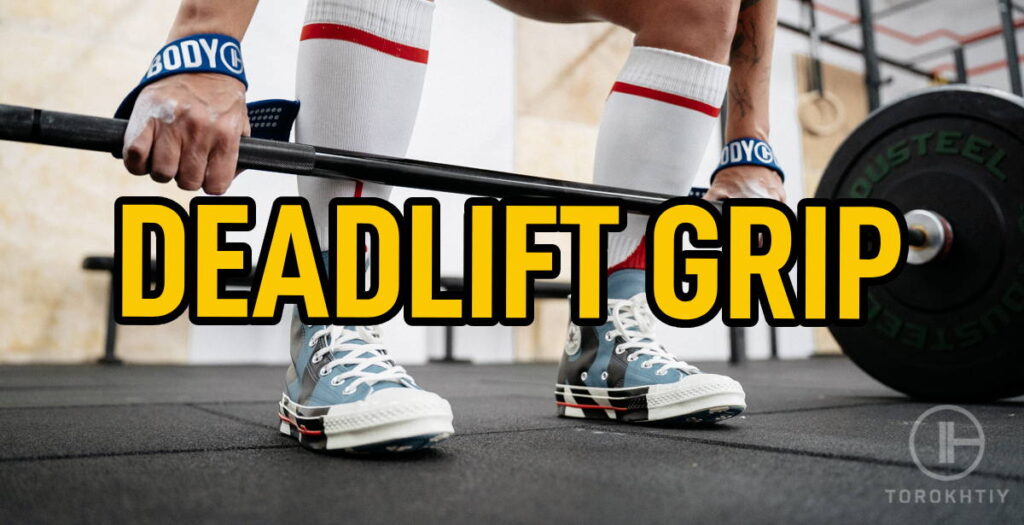
What Is Deadlift Grip
A deadlift grip determines how your hand is going to grip the barbell. There are various kinds of grips, each having positives and negatives. The type of grip you choose will impact your deadlift strength, comfort, maximum capacity, as well as targeted muscle groups and risk of injury.
Deadlift Grip Variations
We’ll be discussing five common deadlift grip variations:
The most common deadlift variations include the overhand, hook, and mixed grip. These are variations of the same type of grip and will work with most deadlifts.
There are also specialized grips like the Snatch and Axle grip, which are less common, but can help you diversify your muscle group activity and increase exercise intensity.
Let’s break down each of the different grips for deadlift variations.
Overhand Grip
The Double Overhand grip or simply Overhand Grip is the classic deadlift hand grip most people start with. This is also the most natural grip position that translates well into real-life activities, although it tends to be slightly weaker than its variations like the Hook and Mixed grip.
Follow us!

Free!
Get a 2-week Weightlifting Program as a bonus for the subscription to kickstart your training plan!

Free!
How To Do The Overhand Grip
Simply grab the barbell overtop with your palms facing downwards. Wrap your fingers, excluding the thumb, around it until you feel you have a tight grip on the bar. Then, add your thumb alongside to secure the grip.
Pros Of The Overhand Grip
The double overhand grip deadlift is the basic form of this exercise you’ll learn first. Along with the Hook Grip, it maximizes forearm and palm muscle activation and leads to increased grip strength. Apart from deadlifts, it can be applied to pretty much any gripping exercise, including pull-ups and rows, for example. It also puts your hand and fingers in the most natural position, which has a lower risk of injury.
Cons Of The Overhand Grip
When attempting the standard deadlift exercise, the Overhand deadlift grip tends to perform the weakest. As you get more fatigued and your grip loosens, the barbell will start rolling in your palm and fingers. Eventually, your fingers will start to release one by one due to exercise pressure, typically starting from the pinkie finger inward. This is the most common reason for grip failure.
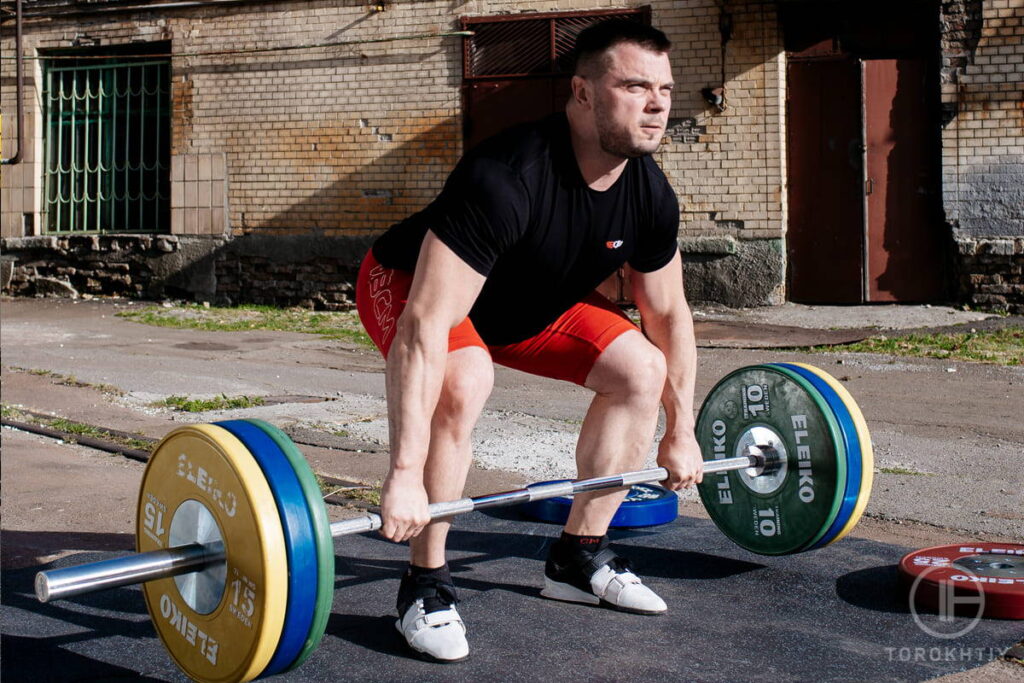
Hook Grip
The Hook Grip is a stronger variation of the overhand deadlift grip. For this reason, you’ll often see it used by weightlifters, many of whom consider it the best grip for deadlift maximums.
How To Do the Hook Grip
The easiest way to explain how to hook grip deadlift is: tucking your thumb underneath your fingers instead of placing it on top. The simplest way to do this is by gripping the barbell with your thumb first, then wrapping your fingers around to close the fist.
Pros Of The Hook Grip
The Hook Grip deadlift is easy to learn but provides greater strength and stability, particularly as you get more tired toward the end of your set. The thumb plays a significant role in overall grip strength, so having it directly gripping the barbell and tucking it in means it’s less likely to give out.
Cons Of The Hook Grip
The Hook Grip deadlift places your thumb in an unnatural position and under heavier pressure. This can make it feel less comfortable and lead to pain and bruising, particularly on the muscle groups just underneath the thumb. It also makes the thumb area less flexible, which can restrict you from quickly readjusting your grip when necessary.
Mixed Grip
With the deadlift mixed grip, one hand grips the barbell overhead, while the other grips it underneath. This type of grip decreases the chance of dropping the barbell at a slight cost of stability and some muscle imbalances.
How To Do The Mixed Grip
Approach the barbell as you would for a regular deadlift grip. Grip the barbell with one hand in the overhand position, while rotating the other hand outward and gripping underneath. It’s generally recommended to use your dominant hand for the overhand grip.
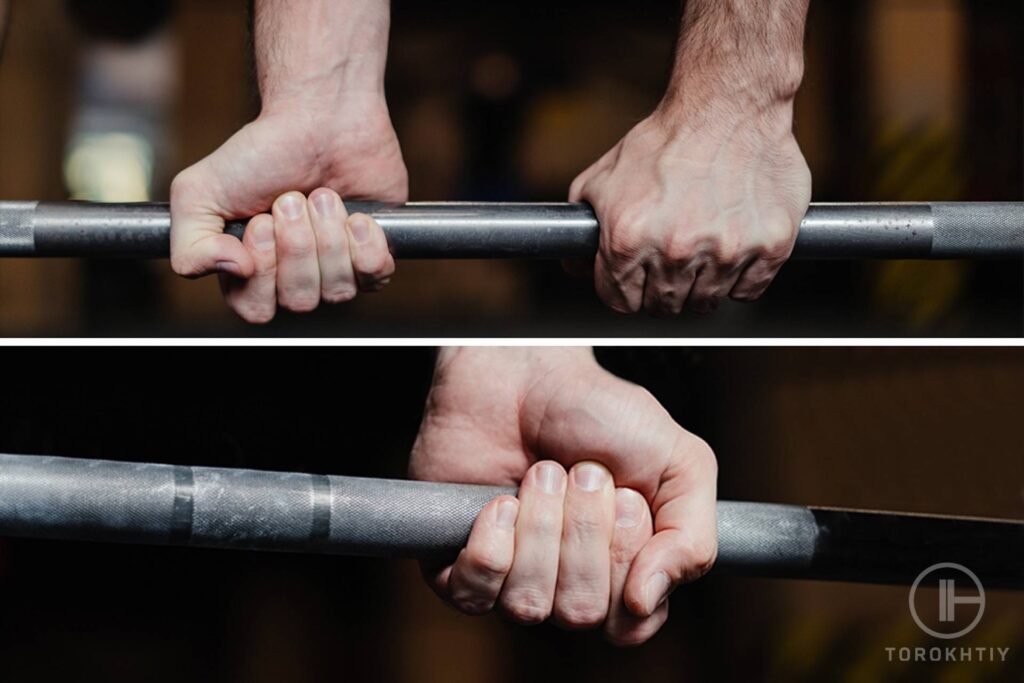
Pros Of The Mixed Grip
By placing one hand in an overhand grip and the other hand in an underhand grip, you reduce the stress on your grip and forearms and prevent the barbell from rolling in your palms. This will stop you from releasing the grip prematurely and help you lift heavier weights than with an overhand grip alone. A mixed grip can also help you engage different muscle groups, as the underhand gripping arm will see greater activation in the forearms, biceps, and lats.
Cons of the Mixed Grip
The deadlift mixed grip forces a bigger lean forward to reach for the underhand grip. This puts greater stress on the lower back and spine. Furthermore, the mixed grip creates an uneven workout due to differing muscle group activations in each arm. For this reason, it’s highly recommended you switch your arms between sets to reduce muscle fatigue and create a more even workout.
Additionally, since one arm is rotated outward, the mixed grip requires higher joint mobility, which means not everyone can do it comfortably.
Snatch Grip
The Snatch Grip Deadlift places your hands in a wider position than other deadlift grips. It’s named after the Snatch, a competitive Olympic lift, due to the same wide-grip arm placement. The Snatch Grip is arguably the hardest to pull off, but it comes with some benefits unique to this deadlift hand grip.
How To Do The Snatch Grip
To perform a Snatch Grip Deadlift correctly, you need to determine the width of your hand placement. The easiest way to do this is to grab the barbell and hold it in an upright deadlift position. When you reach the top of a regular deadlift, the barbell should rest on your thighs. To find your ideal Snatch deadlift grip position, start widening your grip, which will naturally raise the barbell until you feel the bar resting on your hip crease. To check if the position is correct, bend down at your hip. If the barbell sinks into your hip, then the position is correct.
Pros Of The Snatch Grip
The Snatch Grip Deadlift is superior for targeting the upper body. The wider deadlift hand position better targets the upper back and shoulders, particularly the traps, rhomboids, and rear deltoids. It also engages your palms and forearms, developing your grip strength in the process. Additionally, since this grip is all about arm spread, you can combine it with any other grip type, including the standard overhand deadlift grip, hook grip, mixed grip, etc.
Cons Of The Snatch Grip
Due to the wider hand placement, the Snatch Grip Deadlift is noticeably harder than other grips, which may require you to lift less weight. The wider grip also results in more sideways bending at the wrists, elbows, and shoulders, which will put added stress on the joints. Depending on your joint health, this may feel less comfortable or increase the risk of injury.
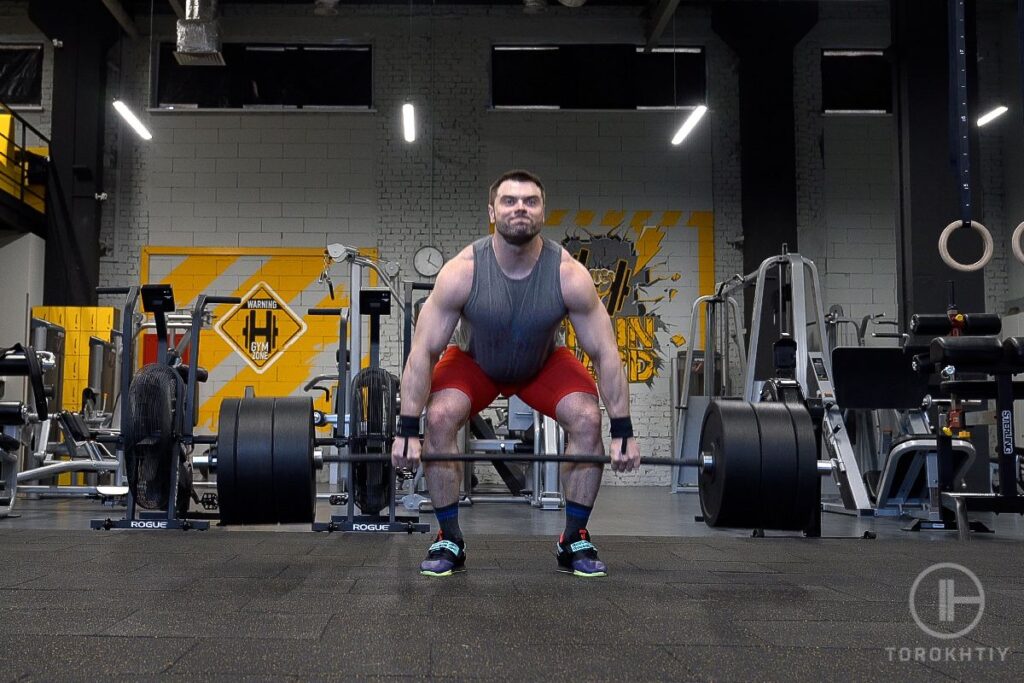
Axle Grip
The Axle Grip is less about the grip technique and more about the equipment used. To do the Axle Grip, you’ll need access to an Axle Barbell, which is about 2 inches in diameter at the shaft. This is noticeably thicker than a typical 1.1-inch thick powerlifting or Olympic barbell most people use for deadlifts.
How To Do The Axle Grip
To perform the Axle Grip, you’ll need access to an Axle Barbell or alternatively find and add a grip attachment to your bar. The actual choice of grip is up to you, but most powerlifters prefer the standard overhand grip since it is the most neutral.
Pros Of The Axle Grip
The Axle Grip utilizes a thick bar to create a challenging lift that requires a thicker grip. This thicker grip is harder to hold onto, which leads to greater muscle activity in your shoulders, forearms, and grip strength. Additionally, the Axle bar activates your upper back and arm muscles to a higher degree, leading to greater muscle gains.
Cons Of The Axle Grip
First, you’ll either need to have an Axle barbell at your disposal or find a DIY solution. Second, the bar’s thickness makes holding onto it much harder, especially for beginners. Finally, the effects of the Axle grip will vary since the exercise difficulty will depend on the size of your palm, meaning it will be easier for some and harder for others.

Wide VS Narrow Grip
The ideal deadlift hand position for you mostly depends on your exercise goals. A wider deadlift grip will lead to an increased range of motion (ROM), which will increase the activation of your upper body muscles and create a more full-body workout. That said, a wider grip will be more challenging to hold onto, which will increase exercise difficulty and lower the amount of weight you can lift.
Conversely, a narrow grip like the one seen in Sumo deadlifts will lead to a lesser ROM, placing more emphasis on lower body development. A narrow grip is also easier to hold onto, resulting in greater stability and allowing for heavier lifts. However, a narrow grip results in more forward lean, particularly at the start of the exercise motion, which will increase the torque on the lower back muscles, a common place for deadlift injury.
How To Choose The Right Deadlift Grip
There are a few things to consider when choosing the right type of deadlift for yourself.
The first is your experience level. If you’re new to deadlifting and want to learn how to grip deadlift reps, the overhand grip or double overhand grip is a good starting point, as it is the most natural position for your hands and fingers.
If you’re accustomed to the Overhand grip, now might be the perfect time to transition into the Hook or Mixed grip. You may find that these provide you with more strength, stability, and comfort, and allow you to reach new personal records.
You should also take into account your exercise goals. You’ll see higher upper body gains with the Snatch or Axle grip. However, these variants may be unnecessarily difficult for you. Generally, if you want more upper body activation, a winder grip will do the trick. Conversely, a narrow grip will lead to higher lower body activation.
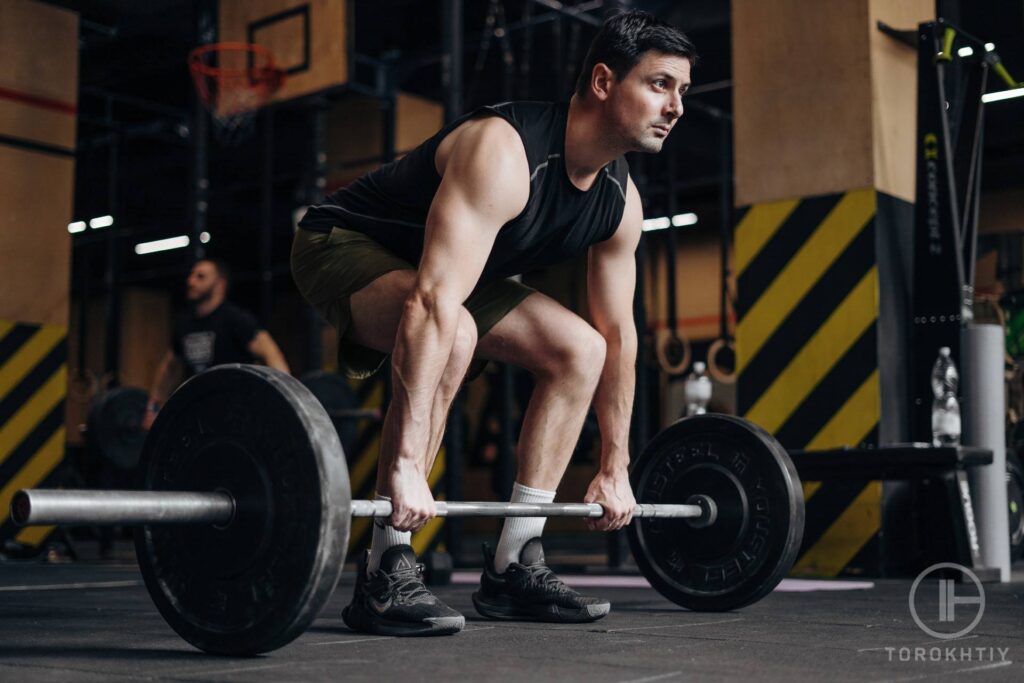
Ultimately, the best way to find the right deadlift grip for you is to try them all out and see how you feel about them. You should also consider mixing different grips for deadlift variety from time to time. The fact of the matter is, everybody is different and what works for some may not work for others.
Which Deadlift Grip Is The Most Difficult
Although it is the most widely used, the standard double overhand grip deadlift is often considered the most difficult because it places a lot of strain on the forearm muscles, causing your arms to tire quickly. Moreover, due to the lack of thumb support, lifters generally can lift less weight using the overhand grip than with a mixed or hook grip.
That said, the difficulty of the different grips for deadlift exercises can vary from person to person. As mentioned earlier, the mixed grip requires the athlete to lean forward more, which may result in balance problems and increased pressure on the lower back and spine. In contrast, a hook grip places additional pressure on the thumb, which may cause discomfort and fatigue more quickly.
On the other hand, the Snatch and Axle grip can be considered more physically demanding than the other grips due to factors such as grip width and barbell thickness. However, it’s important to note that these properties are the intended purpose of the Snatch and Axle grip, respectively. Therefore, comparing the two grips in terms of difficulty would be missing the point.
FAQ
How To Improve Grip Strength For Deadlift?
Probably the best way to develop more grip strength is simply practicing your deadlift. This isn’t a cliché, there’s data to back this up. For example, this study comparing two groups of athletes – one of which performed just the deadlift and the other deadlifts and accompanying exercises – concluded that there wasn’t a significant difference in grip strength developed by the end of the program.
That said, if you want to improve your grip strength in general and don’t want to rely solely on deadlifts, you can add pull-ups, farmer’s walks, kettlebell swings, and other grip strength exercises to your workout plan.
Should You Deadlift With Fingers Or Palms?
To properly grip the barbell during deadlifts, start by placing it at the base of your fingers. As you lift the barbell, it should end up hanging primarily from your fingers.
Some people tend to grip the barbell too high in their palms, which is a common mistake. Lifting the bar at the palm level will force your wrists to bend to hold onto it, increasing the risk of injury and reducing your maximum capacity.
Should You Deadlift Close Grip Or Wide?
As previously discussed, whether you should choose a close or wide deadlift grip will mostly depend on your fitness goals. In a nutshell, choose a narrower grip when you want to train your lower body, and a wider grip when you want more focus on your upper body.
Conclusion
As you’ve seen, the deadlift grip you choose can have a significant impact on your performance, safety, comfort, as well as muscle group engagement. The best grip for deadlift exercises ultimately comes down to preference but personal goals. That said, mixing up different grips can add a bit of exercise variety and prevent exercise monotony.
Have you tried any of these different deadlift grips? What’s your favorite deadlift hand grip? Leave a comment letting us know your thoughts and don’t forget to follow us on social media, where you’ll find more valuable fitness content.
Also read:
- Deadlift Progression
- Deadlifting 405
- Does Deadlift Work Lower Back
- Eccentric Part of Deadlift
- Deadlifts for Back or Legs
- Do Deadlifts Work Glutes
- What Muscles Are Used in Deadlift
- Sumo Deadlift vs Conventional
- Rack Pull vs Deadlift
- Deadlift Program
References:
- Impact of Fat Grip Attachments on Muscular Strength and Neuromuscular Activation During Resistance Exercise // NCBI: https://pubmed.ncbi.nlm.nih.gov/30694963/
- A Comparison between Male and Female Athletes in Relative Strength and Power Performances // NCBI: https://www.ncbi.nlm.nih.gov/pmc/articles/PMC7930971/
- Forearm electromyographic activity during the deadlift exercise is affected by grip type and sex // NCBI: https://pubmed.ncbi.nlm.nih.gov/32446132/
- Genes and Athletic Performance: An Update // NCBI: https://pubmed.ncbi.nlm.nih.gov/27287076/
- How to Do a Deadlift // Very Well Fit: https://www.verywellfit.com/how-to-do-the-deadlift-3498608
Why Trust Us?
With over 20 years in Olympic weightlifting, strength training, nutrition coaching, and general fitness our team does its best to provide the audience with ultimate support and meet the needs and requirements of advanced athletes and professional lifters, as well as people who strive to open new opportunities and develop their physical capabilities with us.
By trusting the recommendations of our certified experts in coaching, nutrition, and sports training programming, as well as scientific consultants, and physiotherapists, we provide you with thorough, well-considered, and scientifically proven content. All the information given in the articles concerning workout programming, separate exercises, and athletic performance, in general, is based on verified data.
The product testing process is described in more detail here.
Author: Sergii Putsov
Head of Sport Science, PhD
Best Results: Snatch – 165 kg,
C&J – 200 kg
Sergii Putsov, Ph.D., is a former professional weightlifter and National team member, achieving multiple medals in the 94 kg weight category at national competitions. With a Master’s degree in “Olympic & Professional Sport Training” and a Sport Science Ph.D. from the International Olympic Academy, Greece, Sergii now leads as the Head of Sport Science. He specializes in designing training programs, writing insightful blog articles, providing live commentary at international weightlifting events, and conducting educational seminars worldwide alongside Olympic weightlifting expert Oleksiy Torokhtiy.
Reviewed by: Oleksiy Torokhtiy
Olympic Weightlifting Champion, PhD in Sport Science
Best Results: Snatch – 200 kg,
C&J – 240 kg
Oleksiy Torokhtiy is a professional athlete boasting 20 years of experience in Olympic weightlifting. With multiple European and World titles under his belt, he has showcased his prowess in two Olympic Games (Beijing 2008 and London 2012). Upon concluding his illustrious career, Oleksiy dedicated himself to coaching. By 2022, he had conducted over 200 weightlifting seminars worldwide. He is the visionary behind an international sportswear and accessories brand known for its motto, “Warm Body Cold Mind.” Additionally, he is an esteemed author and the creator of a series of training programs and eBooks.




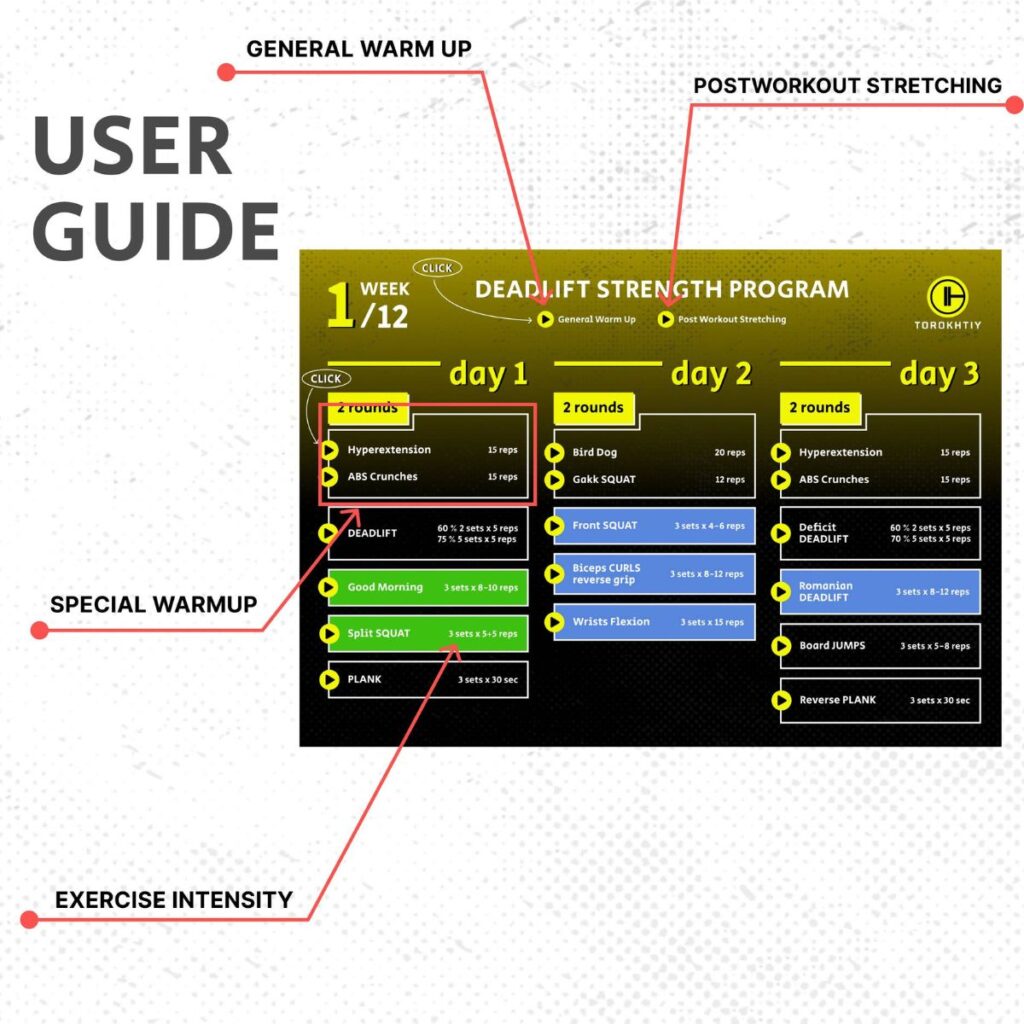
Still have questions after reading our article? Unlock your full potential by engaging with our experts and community! Don’t hesitate — leave a comment below and Sergii Putsov will provide a personalized answer and insights to help you reach your goals.